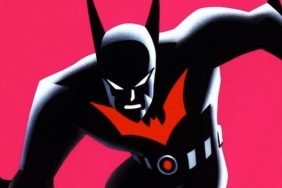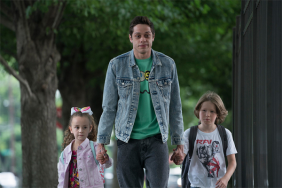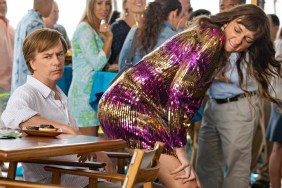
We’ve become so inundated with insipid TED-talk presentations (and by speakers who’ve taken their presentation cues from that template even when not speaking at actual TED events) that conversations on art and politics, particularly where the two intersect, have become exercises in facile uplift and affirmation. Artists who traffic in grittier, darker, more nuanced work or perspectives, those who don’t think the role of art is to be sure the consumer (because that’s what we’re reduced to in those settings) leaves the experience feeling good about themselves are hamstrung by current dictates on the roles and responsibilities of the artist.
What makes Mitra Farahani’s documentary Fifi Howls from Happiness so refreshing (on top of being simply a fantastic documentary) is that the film’s subject, the great, under-recognized Iranian visual artist Bahman Mohasses, truly does not give a fuck about offering succor or touchy-feely platitudes to anyone. He’s gruff, biting, cynical and utterly without faith in humanity. He’s also wickedly funny in his raspy garrulousness. His work – paintings, sculptures, theater design – was tough-minded, beautiful, and confrontational. It challenged those in power, but also took citizenry to task for their complacency, their “boot-licking” when resistance is what is called for.

Check Out: Art Doc of the Week: The Universe of Keith Haring

“One day these people will wake up to their own incompetence; they might not become better people [but] they shall be forced from this boot-licking even if to become a more pitiful nation. And I will make this happen.” That’s Mohasses speaking in a clip from the 1967 Iranian TV documentary The Eye That Hears, directed by Ahmad Faroughi. The clip is one of the many tools used by Farahani to sketch in the tale of a little-known master, much of whose work no longer exists. What the government didn’t destroy, he did by his own hand, and one of the most intriguing aspects of the film is trying to parse how his disdain for the world led him to “kill” so many of his own works. There’s something both suicidal and infanticidal in play there, and Mohassess refuses to provide clarity on his reasons. It also slowly becomes clear that despite all his hard-bitten cynicism, the still politically sharp and engaged artist has had his heart repeatedly shattered by humanity.

Though the film begins with the acknowledgment that Bahman Mohasses died just as the film was wrapping, it’s still shocking for the viewer to actually have some of the great man’s last gasping moments actually captured on film. But for all the sobering, even disturbing aspects to being a witness in this way, it’s also very fitting that Mohasses would make the viewer uncomfortable as he makes his final exit.
You can now rent Fifi Howls from Happiness on YouTube.
Ernest Hardy is a Sundance Fellow whose music and film criticism have appeared in the New YorkTimes, the Village Voice, Vibe, Rolling Stone, LA Times, and LA Weekly. His collection of criticism, Blood Beats Vol. 1: Demos, Remixes and Extended Versions (2006) was a recipient of the 2007 PEN / Beyond Margins Award.








